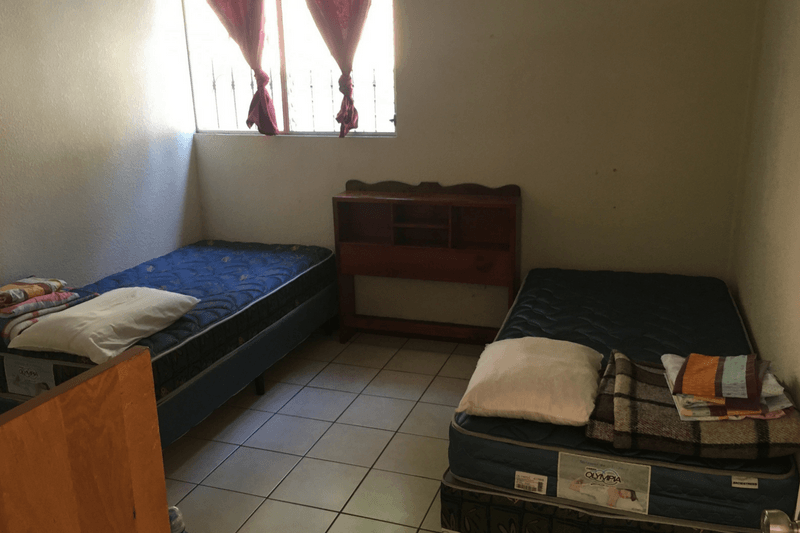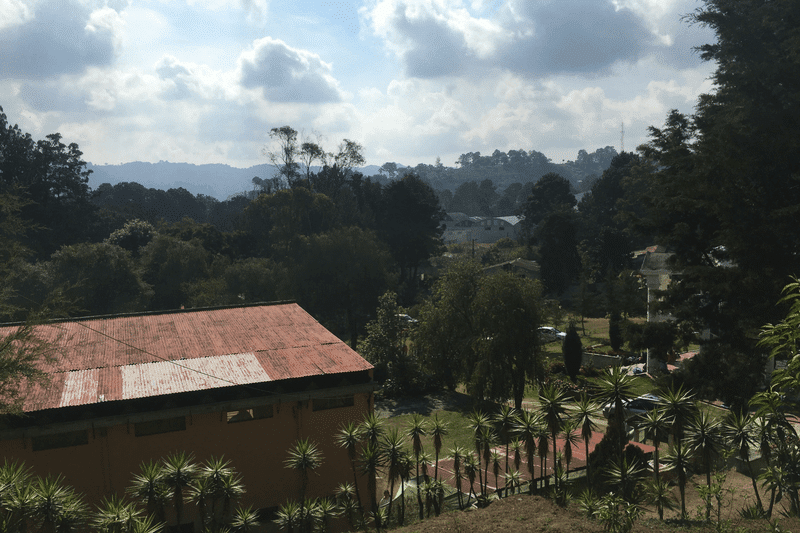Meditation is one of those things that a lot of people have heard about but know nothing about…
…and 2 years ago I was in the same boat. I had read a lot about the benefits of meditating but didn’t really understand where to start.
You sit down for a little while, try not to allow thoughts into your mind and reap the rewards.
How hard can that be?
Well, if you’ve ever actually tried to do this then you know how difficult it really is!
After finally hearing about the benefits of meditating for the 100th time, I decided to give it a go…and the results dumbfounded me!
Meditation Experience Before The Retreat
So I’d finally made the commitment to start meditating on a daily basis.
To keep myself accountable, my brother and I made an agreement that we would both meditate every day.
Because we didn’t really know where to start, we decided to use the guided meditation app called Headspace. This easy to use mobile app has simple to follow instructions that are calmly spoken to you by Andy (who is the founder of Headspace).
The app takes you in small steps from focusing on the breath to focusing on parts of the body and being aware of the space around you.
It was the perfect way to start meditating and after a few short weeks, I was able to have meditation sessions where no thoughts would arise in my mind. I practised 15-minute long sessions because otherwise, it felt like an eternity.
Don’t get me wrong, 4/5 sessions were difficult and I didn’t feel much benefit. I would just sit there and think about what I’m going to do for the rest of the day. But the 1/5 sessions that were good, were worth all of the bad ones.
After a year and a half of using Headspace, I really started to struggle. I wasn’t having any beneficial sessions and found the guided meditations were becoming too predictable. This led to not focusing on the meditation but rather my thoughts (which is a no-no).
I was slowly meditating less and less until finally a few months later, I had stopped completely.
Re-Igniting My Meditation Practice In Guatemala
After a couple of months of not meditating a single time, it was clear that I needed to do something about it.
Coincidently, I had just moved into a Yoga House in Guatemala not long after I stopped meditating. Naturally, many of the people who lived in the Yoga House practised some form of meditation on a daily basis.
This was great for me because it allowed me to talk to them about their daily practice, why they do it and the benefits they enjoy from meditating.
To my surprise, one of my Japanese flatmates told me that she had just been accepted into a 10-day silent meditation retreat…and after talking to many of my other flatmates about how meditating enriches their lives, I felt like this was the perfect opportunity to ignite a daily meditation practice that I would stick to.
A week later, we were on our way to the meditation retreat having no idea what to expect.
Arriving At The 10-Day Silent Meditation Retreat

I was amazed at how beautiful the scenery was where the meditation retreat was being held.
It was situated on a large property covered in fruit trees, whistling birds and green grass as far as the eye could see. This seemed like the perfect place to clear my mind over the next 10 days and create a concrete meditation practice as part of my daily routine.
The accommodation was surprisingly comfortable. Every room was shared between 2 people with a private ensuite bathroom.
One of the most difficult parts of the whole retreat was living with a complete stranger for 10 days who you’ve never spoken to. Because it was a silent retreat this meant that you weren’t allowed to make contact in any way (physical, eye contact, hand gestures etc.) with your roommate for the 10 days that you’d be living together.
It was quite funny because it felt like living with someone you’d had a big fight with and therefore weren’t talking to each other anymore.
On my first two nights of the retreat, I woke up in the middle of the night thinking that my roommate was trying to kill me in my sleep. My mind started going crazy and it was only the first day!
Staying Silent For 10 Days

Before starting the retreat I thought that not being able to talk for 10 days would be the hardest part of the whole experience. It turns out that this was actually the easiest part for me.
I really enjoyed having time to myself to think about the experience and how I could improve each meditation session.
Whenever I wasn’t meditating I was relaxing on top of a hill that looked over the beautiful Guatemalan countryside. With birds chirping away all around me, it was a really pleasant experience.
That being said, not everyone felt the same way. Many people really struggled with not being able to talk or express themselves for 10 days (mainly the women).
For me personally, the hardest part was meditating for 10.5 hours every day.
Vipassana Meditation For 10.5 Hours (Every Day)

This particular meditation retreat practised the Vipassana meditation technique.
The whole premise of Vipassana meditation is not to react to external factors that you can’t control.
Essentially this means that you aren’t reacting to thoughts or physical stimuli that arise and are instead watching them pass by. The point of this is to show you that no matter what you feel (good or bad), the feeling will pass without the need to react to it.
This meant that you literally weren’t able to move a muscle during the meditation sessions.
If you’ve ever tried to sit down for 5 minutes without moving a muscle, you’ll understand how difficult it is. Now imagine trying to do that for 3 hours straight.
Pains of itching, sweating, heat, cold, pins and needles, basically anything you can think of would occur during these sessions, and you weren’t allowed to react.
The only meditation experience I had prior to the retreat was on the Headspace App that I talked about earlier. At the time, I struggled to meditate for 15 minutes in a row.
Now, I had to meditate for 10.5 hours every day for 10 days in a row. To say that I struggled would be a massive understatement.
Thankfully it wasn’t 10.5 hours in a row. The sessions were anywhere between 1-3 hours long with the first session starting at 4 am every day.
Waking up early wasn’t as difficult as I thought it would be. I was at the retreat to meditate and determined to wake up every morning.
However, one day I was falling asleep during the meditation session so I decided to leave the meditation hall early and go back to bed at 5.30am for a nap. Not too long after falling asleep, one of the helpers stormed into my room and demanded that I return to the meditation hall immediately.
I didn’t make that mistake again.
What Was The Food Like?
It sounds silly, but my favourite part of the day was meal time.
We weren’t allowed to express ourselves in any way (including writing, talking, reading, using electronics etc.), so being able to do something other than meditating was refreshing.
All of the meals were vegan so that cooks didn’t have to cater to different dietary requirements.
Breakfast and lunch were the real highlights. They typically consisted of oatmeal, fruit, vegetables, pasta or rice.
Unfortunately, dinner was bleak. All that was allowed was 1 piece of fruit and some tea. This was in tune with the Vipassana philosophy that you shouldn’t always react to your cravings and appreciate the fact that you’ll be fine if you don’t indulge every time you’re hungry.
For those people who were doing their 2nd Vipassana retreat, it was even more difficult. For dinner, all they were allowed were limes and hot water.
Many people found this the most difficult part of the whole retreat, especially in the first couple of days.
One of the funniest things I heard (after the 10 days were over) was the trouble the women had during every meal. Because the men and women were segregated throughout the whole retreat, they ate in separate locations.
The men were able to portion control all the food so that there was enough for everyone. This meant that there were always leftovers.
However, for the women, it was a completely different story. The first women to serve themselves became vultures and would take as much food as they could fit on their plate. Unfortunately, this meant that there wasn’t enough food for the women at the back of the line.
After a couple of days, the girls had to be served all of their food by a volunteer so that everyone had enough to eat. But this did lead to many of the girls leaving the retreat early.
How Much Did The Silent Meditation Retreat Cost?
The great thing about the Vipassana belief is that everyone deserves the opportunity to take part in one of their retreats and adopt the Vipassana Methodology.
So by this logic, the retreat was entirely donation based. If you didn’t experience any benefit from the retreat you were encouraged not to donate anything…and if you left early you weren’t allowed to donate.
However, if you benefited from the retreat then you would donate however much you could afford. The donation helps to pay for someone else to attend the retreat in the future.
With all that being said, the cost to put one person through another Vipassana 10-day silent meditation retreat (in Guatemala) was around $130. When you think about it, for all the food, accommodation and meditation sessions that were included over the 10 days, it’s quite inexpensive.
Integrating Back Into Society
Returning back to my home in Guatemala was a strange experience. After having no contact with the outside world for 10 days, everything smelt funny, tasted different, sounded strange and felt weird.
It definitely took me a few days to feel “normal” again. I found myself wanting to spend more time by myself without talking to anyone for a little while.
After a few days, everything went back to normal and I was able to reflect on my experience.
Final Thoughts About The Experience
So after that crazy 10-day experience, do I recommend it?
The truth is it depends!
The 10-day silent meditation retreat definitely isn’t for everyone.
While I believe everyone can benefit from attending a silent meditation retreat, if you aren’t determined to stay for 10 days and take it seriously, you’ll most likely leave early and not have any benefit at all.
No matter if it’s your first retreat or your tenth retreat, everyone found it challenging at some point.
Everybody has different reasons for attending the retreat and takes something unique away from the experience.
For me personally, I realised how trivial many of the things in my life were. Why do I worry about the little things that don’t really matter? It’s okay to step back and let your emotions pass by without reacting to them.
It was an incredible experience that shed some light on myself and the way I look at the world.
The point of this article was never to preach about how you should live your life or what you should believe but instead, give you an honest encounter of my experience during the 10-day silent meditation retreat…
…and yes, I now have a meditation practice that I stick to every day!
Have you been to a silent meditation retreat? How was your experience?

Great article mate, I definitely want to do a meditation retreat now too!
Glad you enjoyed it. It’s definitely a crazy experience
Super interested in doing a silent retreat and wondering also where is the yoga house you lived in?
hi Isabel. the yoga house was in Xela (Quetzaltenango) Here is a link to where I stayed. the rooms are old but if you don’t care about that, they are cheap and free yoga classes for those living there…at least that’s how it was when I was there in 2017.
https://yogahousexela.wordpress.com/roomscuartos/